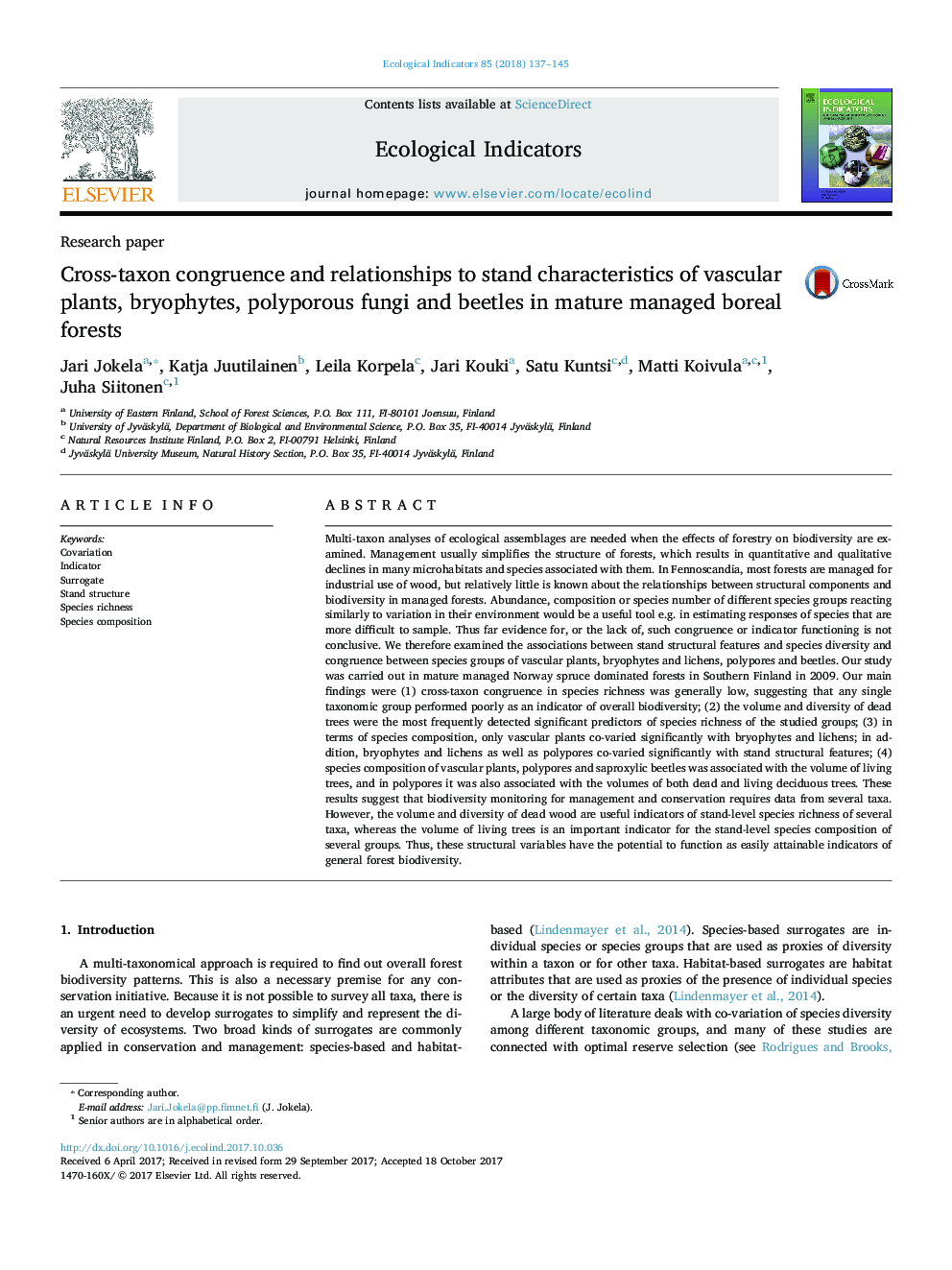| Article ID | Journal | Published Year | Pages | File Type |
|---|---|---|---|---|
| 8845655 | Ecological Indicators | 2018 | 9 Pages |
Abstract
Multi-taxon analyses of ecological assemblages are needed when the effects of forestry on biodiversity are examined. Management usually simplifies the structure of forests, which results in quantitative and qualitative declines in many microhabitats and species associated with them. In Fennoscandia, most forests are managed for industrial use of wood, but relatively little is known about the relationships between structural components and biodiversity in managed forests. Abundance, composition or species number of different species groups reacting similarly to variation in their environment would be a useful tool e.g. in estimating responses of species that are more difficult to sample. Thus far evidence for, or the lack of, such congruence or indicator functioning is not conclusive. We therefore examined the associations between stand structural features and species diversity and congruence between species groups of vascular plants, bryophytes and lichens, polypores and beetles. Our study was carried out in mature managed Norway spruce dominated forests in Southern Finland in 2009. Our main findings were (1) cross-taxon congruence in species richness was generally low, suggesting that any single taxonomic group performed poorly as an indicator of overall biodiversity; (2) the volume and diversity of dead trees were the most frequently detected significant predictors of species richness of the studied groups; (3) in terms of species composition, only vascular plants co-varied significantly with bryophytes and lichens; in addition, bryophytes and lichens as well as polypores co-varied significantly with stand structural features; (4) species composition of vascular plants, polypores and saproxylic beetles was associated with the volume of living trees, and in polypores it was also associated with the volumes of both dead and living deciduous trees. These results suggest that biodiversity monitoring for management and conservation requires data from several taxa. However, the volume and diversity of dead wood are useful indicators of stand-level species richness of several taxa, whereas the volume of living trees is an important indicator for the stand-level species composition of several groups. Thus, these structural variables have the potential to function as easily attainable indicators of general forest biodiversity.
Related Topics
Life Sciences
Agricultural and Biological Sciences
Ecology, Evolution, Behavior and Systematics
Authors
Jari Jokela, Katja Juutilainen, Leila Korpela, Jari Kouki, Satu Kuntsi, Matti Koivula, Juha Siitonen,
